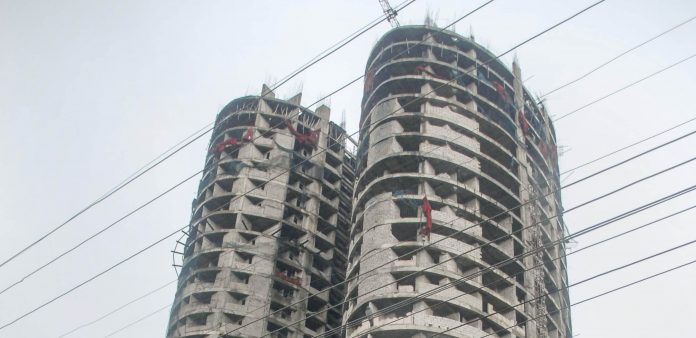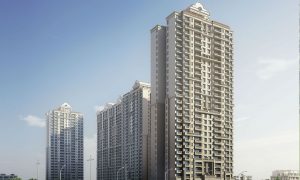In its review petition, Supertech has contended that demolition of one tower alone would ensure compliance with minimum distance requirements and the national building code, without affecting the environment.
Real estate firm Supertech Limited has filed a review application before the Supreme Court seeking a modification of its earlier order directing the demolition of the 40-storey twin towers in Noida. It has said that demolition of one tower alone would ensure compliance with minimum distance requirements and the national building code and would also preserve the environment.
The Supreme Court had on August 31 ordered the demolition of both the structures, located in Sector 93A, within three months. The court held that the construction violated the minimum distance requirement and had been built illegally, without taking the consent of the individual flat owners, as required under the UP Apartment Act.
In its review application, Supertech has said that it is not challenging the legality or substance of the August 31 judgment but is only seeking a modification to save “crores of rupees”. It said that by demolishing only one tower, T17, the minimum distance requirement from the other building, T1, could be achieved.
The builder has said in the application that due to the proximity of T17 with the other towers, it cannot demolish the building using explosives and the same would have to be done brick by brick.
The application is yet to be heard by the apex court.
The other tower, T16, can be retained as it is already at a distance of 43 metres from T1 and is not illegal, it said in the review application.Green impact and resource-wastage pitch
Supertech has submitted that the entire demolished area would be converted into a landscaped green space. The builder has, through an interim measure, sought a status quo on the entire demolition exercise until the case is heard and decided by the apex court.
The builder has also claimed that restricting the demolition to only one tower would ensure that resources worth crores of rupees would be saved from going waste. Construction of the two towers has already consumed huge amounts of steel and cement, as well as labour, which would all go waste and be reduced to scrap, it said.
This scrap would then be disposed of as debris and dumped in landfill sites, which are already overburdened, it stated. This would add to the environmental issues currently being faced by landfill sites, adding to the existing carbon footprint, the builder said.
If these suggestions are accepted, the current residents would be protected and provide accommodation to allottees who had sought their flats, while ensuring that the residents of other towers do not have to face problems due to the demolition of the towers, it said.
The apex court order
A bench of Justices DY Chandrachud and MR Shah had on August 31 ordered that the twin towers should be demolished within three months and that the builder would have to bear the expenses for the same.
The court had said that the demolition shall be carried out by the Central Building Research Institute (CBRI) to ensure safety. In case the CBRI refuses, a new authority would be appointed, the bench said.
“The sanction given by NOIDA on 26 November 2009 and 2 March 2012 for the construction of T-16 and T-17 is violative of the minimum distance requirement under the NBR 2006, NBR 2010 and NBC 2005,” the 140-page order had said.
The Supreme Court had observed that the consent of the individual flat owners was necessary under the UP Apartment Act before the twin towers were constructed as the common area was reduced by adding new flats.
“The case has revealed nefarious complicity of the planning authority in the violation by the developer of the provisions of law…The suggestion that the twin towers form part of one block was an afterthought,” the order had said.Through its order, the Supreme Court had upheld a 2014 verdict of the Allahabad High Court directing the demolition of the Emerald Court project.



































